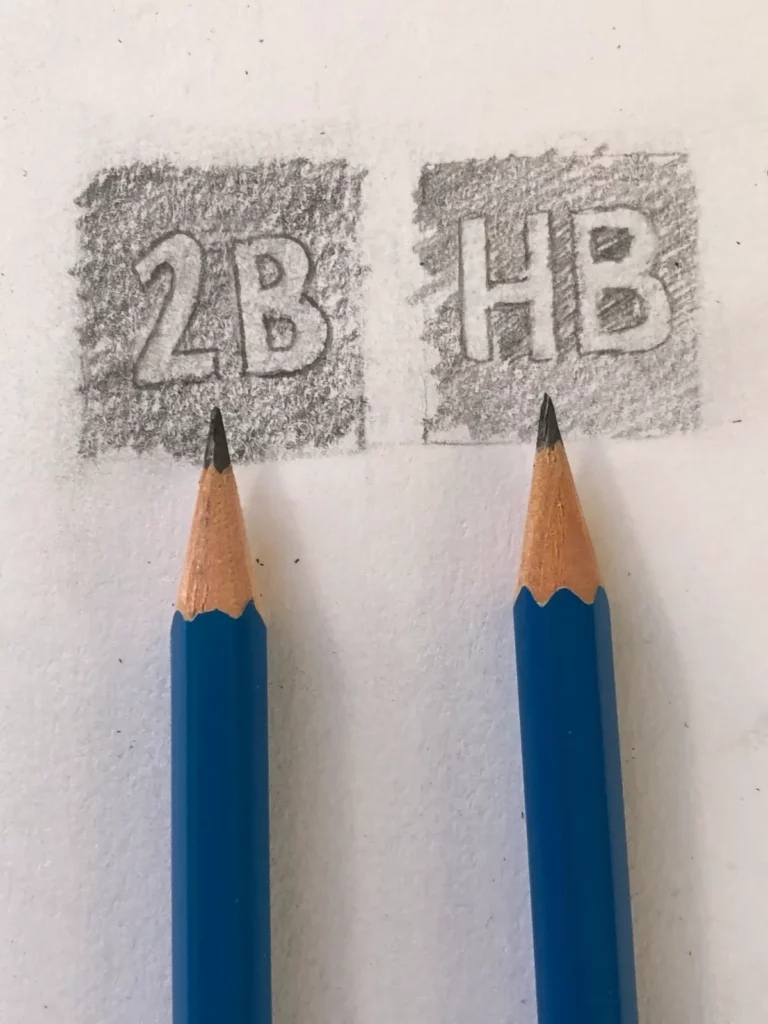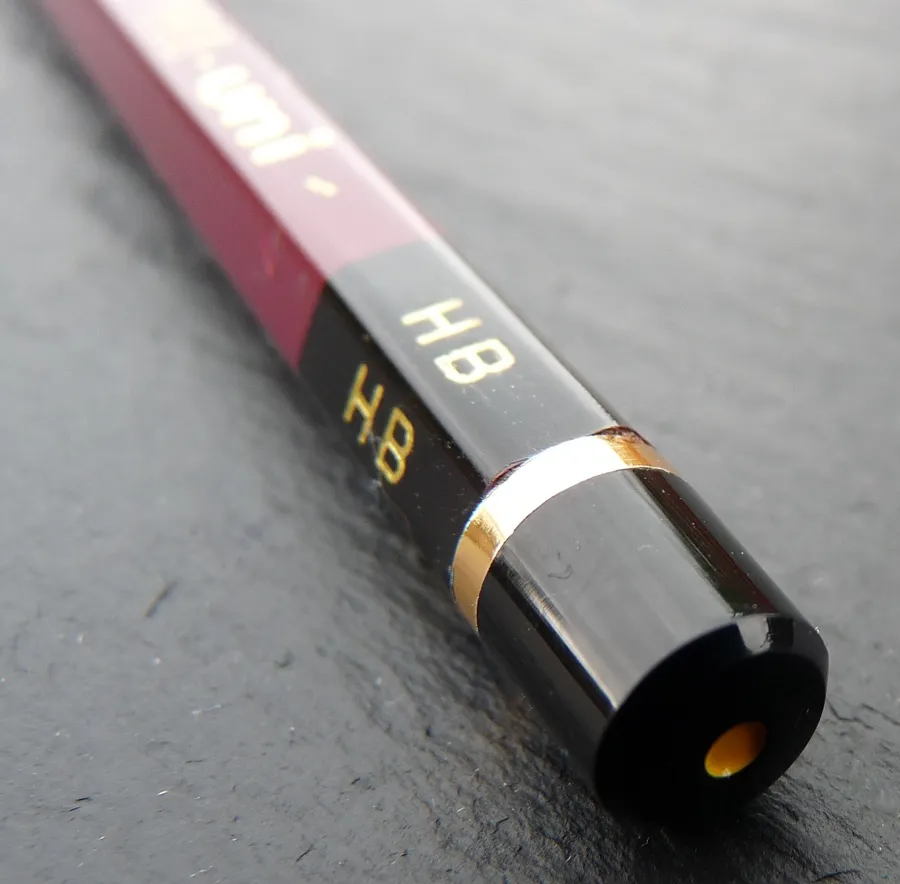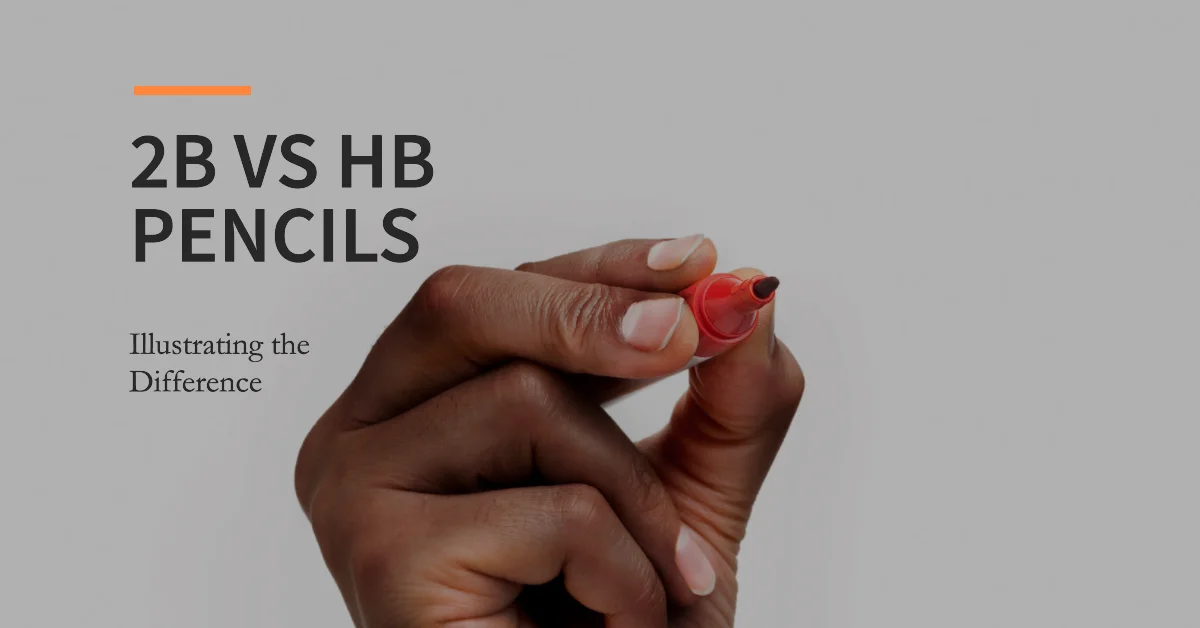Difference between 2b and hb pencil

Pencils have been an integral part of our lives, serving as tools for writing, drawing, and sketching. It was first discovered in England in 1565 when graphite rods were used to mark sheep while counting.
Later, in 1790, the first pencils with wooden coverings were created. Pencils are made of wood, and inside, there is a graphite core.
This core is a mixture of clay and finely ground graphite, which is combined with water and pressed at high temperatures to create thin pencil rods.
Among the wide range of graphite pencil grades available, the HB and 2B hold prominent positions. Understanding the differences between these two grades is crucial for achieving the desired results in various creative endeavors.
2B vs HB Pencil in Tabular Form
| Aspect | 2B Pencil | HB Pencil |
|---|---|---|
| Degree of Hardness | Soft than HB | Harder than an H, softer than a 2B |
| Shade Production | Darker | Medium shade |
| Line Darkness | Darker and more intense | Lighter and less intense |
| Lead Composition | Higher concentration of graphite, less clay | Balanced ratio of graphite and clay |
| Ideal Usage | Drawing, shading, artistic applications | General writing, everyday use, sketching |
| Erasability | Slightly less erasable than HB | Easy to erase, leaves minimal residual marks |
| Line Density | High line density | Medium line density |
| Graphite Hardness | Softer lead | Harder lead |
| Versatility in Mark Making | Produces darker, bolder lines | Produces lighter, more controlled lines |
| Common Applications | Artwork, sketches, shading, illustrations | Note-taking, writing, drafting, basic drawing |
What is a 2B Pencil

The 2B pencil is a popular choice among artists, designers, and individuals seeking richer and darker lines in their work.
The “B” designation in 2B signifies a softer lead and darker marks
. It contains a higher concentration of graphite and less clay compare to harder pencils, allowing for smooth and expressive strokes.
The 2B pencil is favored for its ability to produce deep, intense shades and its versatility in drawing and shading techniques.
What is an HB Pencil

The HB pencil occupies a central position on the graphite grading scale and is often consider a standard writing and drawing tool.
The “HB” designation combines “hard” and “black,” indicating a balance between the hardness of the lead and the darkness of the mark. It manufacturers with graphite and clay, resulting in a medium-hard lead that offers a smooth writing experience.
The HB pencil is widely use for general writing purposes and is a staple in classrooms and offices.
Tip: To reduce the smudging effect of a 2B pencil, try using a lighter touch when writing or drawing. Additionally, using a fixative spray can help to set the graphite and prevent smudging.
Differences between HB and 2B pencils
- Hardness: The HB pencil falls in the medium hardness range, while the 2B pencil has a softer lead.
- Clay Content: The HB pencil contains a limited amount of clay, which contributes to its medium hardness. In contrast, the 2B pencil has a higher clay content, making its lead softer.
- Shade: The HB pencil produces a moderate shade, striking a balance between light and dark. On the other hand, the 2B pencil creates a darker shade, adding depth and intensity to artistic work.
- Erasability: The HB pencil is easier to erase, allowing for effortless corrections. Conversely, the 2B pencil leaves a more indelible mark and requires a firmer touch to erase effectively.
- Line Density: When used for writing or drawing, the HB pencil creates a medium line density. The lines are refined and controlled. In contrast, the 2B pencil produces a dark line density, imparting a captivating intensity to strokes.
- Ideal Usage: The HB pencil is preferred for general writing purposes due to its balance of hardness and darkness. It is widely used by students and professionals. The 2B pencil, with its softer lead and darker marks, is favored by artists for bold and expressive work.
Exploring Different Graphite Pencil Grades:

While HB and 2B pencils are widely recognized and utilized, a plethora of other grades exist to cater to specific requirements. From harder graphite pencils like 4H, ideal for fine details, to soft pencils pencils like 6B, perfect for expressive and bold work, each grade has its own place in the artistic arsenal.
- HB: The HB grade represents a balance between hardness and darkness.
- Hardness: Higher numbers (e.g., 2H, 4H) indicate harder leads.
- Blackness: Higher numbers (e.g., 2B, 4B) indicate softer leads and darker marks.
- Graphite Hardness Scale: The HB grade is part of a scale ranging from 9H (hardest) to 9B (softest).
- Marking Characteristics: Harder leads produce lighter marks, while softer leads create darker and more intense marks.
Summary – 2B vs HB Pencil
In summary, the key difference between hb and 2B pencils lies in their lead composition and resulting characteristics. The 2B pencil, with its softer lead and higher graphite concentration, produces darker and more intense lines, making it ideal for artistic applications such as drawing and shading. On the other hand, the HB pencil strikes a balance between hardness and blackness, providing a medium shade and versatility for everyday writing and sketching needs. Both pencils have their unique strengths, catering to different artistic preferences and usage scenarios.
Understanding the variations in pencil grades, such as HB and 2B, empowers individuals to select the right tool for their specific needs. Whether one seeks bold artistic expressions or precise writing, the world of pencils offers a range of grades to explore and experiment with. So, next time you embark on a creative endeavor, choose your pencil wisely and let your strokes bring your imagination to life.
Note: The information provided in this article serves as a general guide and does not constitute professional advice. The suitability of a pencil grade may vary based on personal preferences and specific applications.

